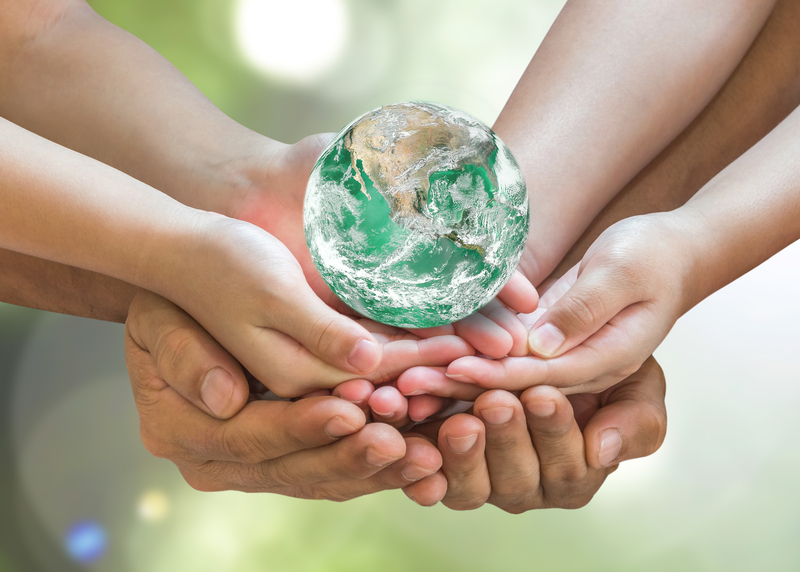Responsible Methods for Getting Rid of Old Cookware
Do you have nonstick pans that are peeling, cookware with warped bottoms, or stacks of rusty pots cluttering your cabinets? If so, you're probably wondering what to do with old cookware. Responsibly getting rid of old pots and pans isn't always as simple as tossing them in the trash. In fact, finding sustainable solutions can benefit both the environment and your community. In this comprehensive guide, we'll explore the top responsible methods for getting rid of old cookware, including recycling, donations, repurposing, and safe disposal tips.
Why Should You Dispose of Old Cookware Responsibly?
When cookware reaches the end of its usable life, it often contains materials--such as metals, nonstick coatings, and plastics--that can harm the environment if not disposed of properly. Abandoning pots and pans in landfills contributes to pollution and resource waste. On the other hand, responsibly recycling or donating used cookware extends the life cycle of these items and helps reduce your carbon footprint.
- *Environmental Conservation*: Many pots and pans are made from metals that can be recycled and reused, lessening the demand for new resources.
- *Minimizing Landfill Waste*: Disposing of old cookware properly prevents non-biodegradable materials from piling up in landfills.
- *Community Support*: Donating usable pans and pots can help families in need or support charitable organizations.
- *Creative Reuse*: Repurposing old cookware can give it new life as practical or decorative items.

Assessing Your Old Cookware: Is It Safe to Donate or Reuse?
Before discarding your cookware, first examine its condition. Here are some questions to consider:
- Is the nonstick coating flaking or peeling? If yes, it cannot be safely used for cooking or donated.
- Are there dents, warps, or cracks? Heavily damaged cookware is best recycled or discarded.
- Does it have rust? A little rust can be scrubbed away, but heavy rusting may make it unsuitable for donation.
- Is it made from recyclable materials? Many pans are aluminum, stainless steel, or cast iron--perfect for recycling.
Top Responsible Ways to Get Rid of Old Pots and Pans
1. Recycle Old Cookware Through Local Programs
Many types of cookware are recyclable, particularly those made of metals like iron, stainless steel, copper, and aluminum. Recycling your old cookware is one of the most environmentally friendly ways to dispose of them. Follow these steps:
- Check Local Recycling Guidelines: Contact your municipality or waste management service to see if they accept cookware. Some programs require separating the handle or removing plastic parts.
- Drop Off at a Metal Scrap Yard: Many scrap yards accept metal cookware, even those with nonstick coatings. They separate base materials for recycling.
- Specialized Recycling Events: Look for community recycling events or hazardous waste collection days that accept household items like pans and pots.
*Tip:* Remove any non-metal parts, such as plastic handles or glass lids, if possible. This can help ensure your cookware is accepted at recycling facilities.
2. Donate Usable Cookware to Charities or Community Groups
If your pots and pans are still in decent condition, but no longer needed, consider donating them. Donated cookware can support local families, nonprofit kitchens, and shelters.
- Local Thrift Stores: Many accept gently used kitchenware if it's clean and functional.
- Homeless Shelters & Food Banks: These organizations sometimes seek cookware for meal preparation or to assist people transitioning into homes.
- Schools & Community Centers: Cooking classes and community kitchens often welcome extra pots and pans.
- Online Community Groups: Platforms like Freecycle, Buy Nothing, Craigslist, or Facebook Marketplace are great for giving away cookware locally.
Note: Only donate cookware that's still safe and functional. Pans with flaking nonstick coatings, broken handles, or severe warping should not be donated.
3. Repurpose Pots and Pans Creatively
Not all old cookware has to end up recycled or trashed. Turn your tired pots, pans, and skillets into creative home and garden decor! Here are some ideas:
- Planters: Fill pots or pans with soil for quirky garden or windowsill planters.
- Storage Bins: Use deep pots to organize hardware, craft supplies, or toys.
- Wall Art: Arrange and mount attractive vintage pans on walls as unique decorations.
- Clocks or Mirrors: Transform fry pans into rustic wall clocks or mirrors with a bit of DIY ingenuity.
- Bird Baths or Feeders: Shallow metal pans make great bases for bird-friendly garden features.
*Pro Tip: Scratched or discolored cookware still makes for excellent upcycling projects. Repurposing is a fun, responsible way to keep old items out of landfills.
4. Trade-In or Return Programs
Some manufacturers and retailers offer trade-in or recycling programs for old cookware.
- Brand Programs: Certain premium brands, like Le Creuset or Calphalon, periodically offer trade-in events--giving store credits or discounts for turning in used cookware.
- Retailer Take-Backs: Stores like Target and Bed Bath & Beyond have seasonal recycling events for kitchen items, including pans, at specific locations.
- Mail-Back Services: Some recycling companies allow you to mail in old cookware for proper processing--especially useful for nonstick pans.
Check each program's details--eligibility, accepted materials, and any fees--before bringing in your old pots and pans.
5. Safe Disposal: When There Are No Other Options
If your cookware is beyond repair and not accepted for recycling, responsible disposal is the final option.
- Household Waste: As a last resort, very damaged or mixed-material cookware should be placed in the trash. Try to remove metal parts for recycling first, if possible.
- Hazardous Waste Facilities: Some cookware, especially those with Teflon or PTFE coatings, may be considered hazardous in certain areas. Check your local guidelines for disposal instructions.
Remember: Dumping old cookware illegally or in unauthorized locations is environmentally harmful and potentially subject to fines.
Special Considerations: Nonstick, Cast Iron, and Ceramic Cookware
How to Dispose of Nonstick Pans Responsibly
Nonstick pans pose special challenges due to their Teflon (PTFE) coatings. Here's how to get rid of old nonstick pans responsibly:
- Check Local Rules: Some recycling centers do not accept nonstick surfaces; others require you to remove the handle or strip the coating.
- Brand Recycling: Manufacturers like GreenPan may accept old pans via mail-back for proper recycling.
- No Burning! Never burn Teflon-coated cookware. Toxic fumes can be released, posing serious health hazards.
- Hazardous Waste Days: Some municipalities include nonstick pans in hazardous waste collection events.
How to Get Rid of Old Cast Iron Cookware
Cast iron is highly recyclable and extremely durable. Before discarding, see if it can be restored--it often only needs re-seasoning!
- Restoration: Remove rust and re-season. Cast iron can last for generations.
- Donation: Well-seasoned, crack-free cast iron is in high demand!
- Scrap Metal Recycling: Broken or unusable cast iron can be placed with scrap metal at many recycling centers or scrap yards.
Ceramic, Glass, and Enamel Cookware Disposal
Cookware made of these materials cannot generally be recycled with metals. Here's what you can do:
- Repurpose: Broken or cracked ceramic makes colorful garden mulch or mosaic art. Glass lids can become serving trays or cheese boards.
- Trash Disposal: If not usable, wrap broken pieces securely and dispose of them in trash--most recycling centers cannot process these materials.

Frequently Asked Questions About Disposing of Old Cookware
Can You Put Old Pots and Pans in the Recycling Bin?
It depends on local policies. Some cities allow metal cookware in curbside recycling, but most require you to use recycling drop-off centers or scrap yards. Never place nonstick or mixed-material cookware in single-stream curbside recycling bins without checking first.
Can Toxic Cookware Be Recycled?
Cookware with Teflon or other potentially toxic coatings must be handled carefully. Many metal recyclers accept these, but specialty processing may be needed to safely remove the coatings. When in doubt, ask your recycling provider for guidance.
Is Donating Used Cookware Safe?
Yes, if the cookware is clean, free from hazardous coatings, and in good repair. Heavily damaged, rusty, or flaking pans aren't suitable for donation and could pose health risks.
Are There Retailers That Accept Cookware Recycling?
Yes, some kitchenware chains and department stores periodically host recycling drives for old pots and pans. Check announcements from major retailers or inquire at the customer service desk.
How Should I Prepare Cookware for Recycling or Donation?
- Clean thoroughly -- remove all food residue and grease.
- Remove non-metal parts (handles, knobs, lids) if possible.
- Bundle similar materials together for easier recycling handling.
Conclusion: Take the Responsible Route with Old Cookware
Getting rid of old cookware doesn't have to mean harming the environment or filling up landfills. Responsible methods for disposing of unwanted cookware--from recycling and donation to creative upcycling and conscientious disposal--help sustain natural resources and benefit your community.
Whether you recycle, donate, repurpose, or safely discard your old pots and pans, every effort counts. Our kitchen tools work hard for us; let's honor their service by ensuring they're disposed of in the most environmentally friendly way possible. Start today and set a new standard for responsible cookware disposal in your home!
- Check your local recycling rules before dropping off cookware.
- Donate whenever possible, prioritizing safety and usability.
- Get creative--give new life to old pans as planters, organizers, or decor!
- Spread awareness--share these responsible tips with friends and family.
For more eco-friendly kitchen tips and guides, bookmark this page and follow our updates on sustainable living!
```